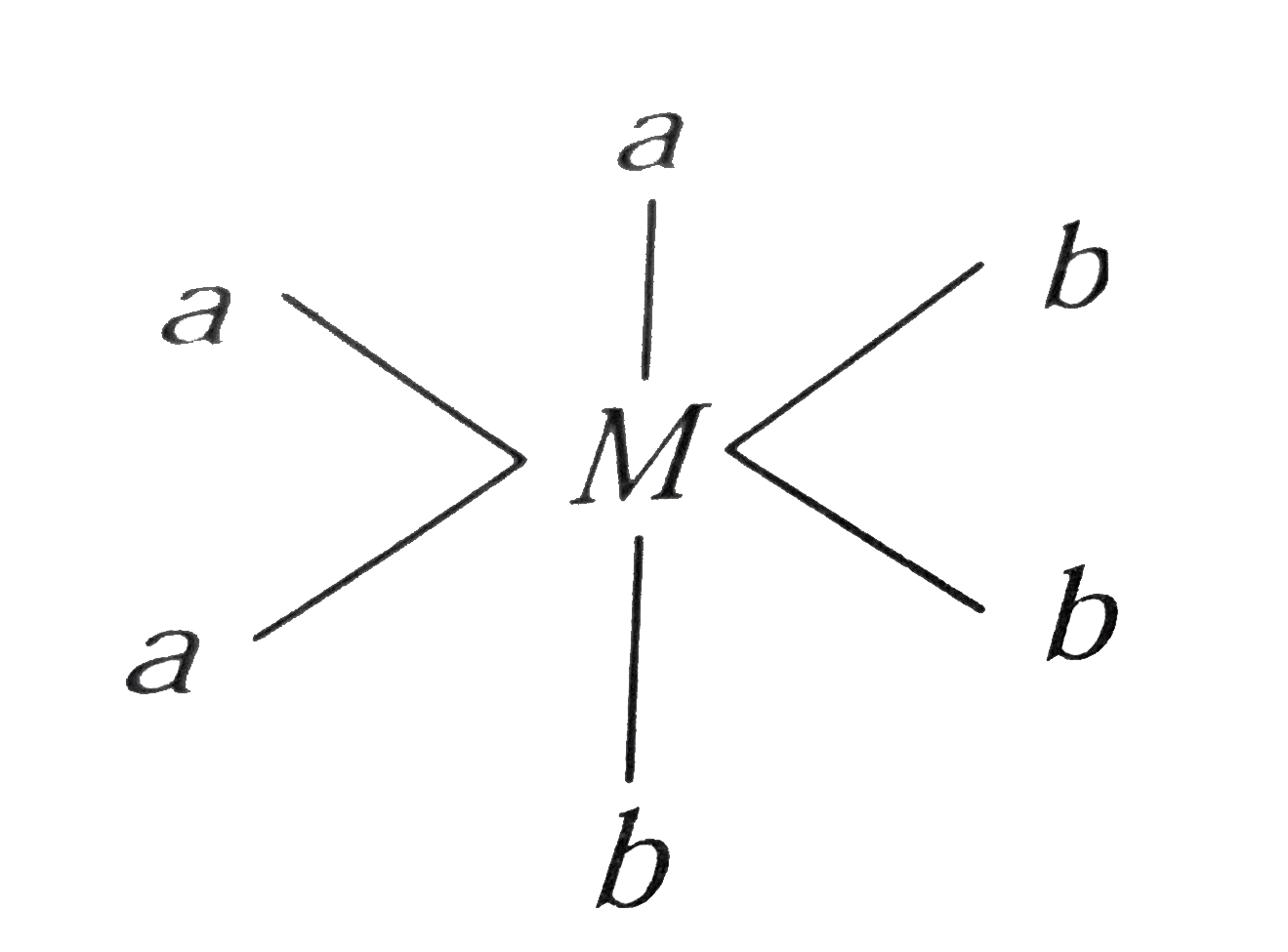Octahedral Complexes
Step by step video & image solution for Octahedral Complexes by Chemistry experts to help you in doubts & scoring excellent marks in Class 12 exams.
Updated on:21/07/2023Similar Questions
Octahedral complex shows which form of geometrical isomerism

View SolutionGeometrical isomerism arises in heteroleptic complexes due to different possible geometrical arrangement of the ligands. Important examples of this behaviour are found with coordination number 4 and 6. Such isomerism is not possible for a tetrahedral geometry but it is possible for square planar as well as octahedral complexes. Optical square planar as well as octahedral complexes. Optical square planar as well as octahedral complexes. Optical isomers are mirror images that cannot be superimposed on one another. These are called enantiomers. Optical isomerism is common in octahedral complexes involving bedentate ligands.
Select the correct statement.
View Solution
Knowledge Check
Geometrical isomerism arises in heteroleptic complexes due to different possible geometrical arrangement of the ligands. Important examples of this behaviour are found with coordination number 4 and 6. Such isomerism is not possible for a tetrahedral geometry but it is possible for square planar as well as octahedral complexes. Optical square planar as well as octahedral complexes. Optical square planar as well as octahedral complexes. Optical isomers are mirror images that cannot be superimposed on one another. These are called enantiomers. Optical isomerism is common in octahedral complexes involving bedentate ligands.
Which one of the following statements is false ?A[cis−Pt(NH3)2Cl2] will have some dipole momentB[cis−Pt(NH3)2Cl2] will show geometrical as well as optical isomerism.Ccis−[CrCl2(ox)2] is a chiral molecules.D(a) and (b) bothGeometrical isomerism arises in heteroleptic complexes due to different possible geometrical arrangement of the ligands. Important examples of this behaviour are found with coordination number 4 and 6. Such isomerism is not possible for a tetrahedral geometry but it is possible for square planar as well as octahedral complexes. Optical square planar as well as octahedral complexes. Optical square planar as well as octahedral complexes. Optical isomers are mirror images that cannot be superimposed on one another. These are called enantiomers. Optical isomerism is common in octahedral complexes involving bedentate ligands.
Select the correct statement.ABoth [NiCl2(PPh3)2] and its analogous Pd(II) show geometrical isomerism.B[CoBrCl(en)2] will show geometrical isomerism but is chiral compound.Ccis−[Co(NH3)4Br2]+ can exist as enantiomerDA complex of palladium (II) with two chloride ions and two thiocyanate ions will show linkage as well as geometrical isomerism.Geometrical isomerism arises in heteroleptic complexes due to different possible geometrical arrangement of the ligands. Important examples of this behaviour are found with coordination number 4 and 6. Such isomerism is not possible for a tetrahedral geometry but it is possible for square planar as well as octahedral complexes. Optical square planar as well as octahedral complexes. Optical square planar as well as octahedral complexes. Optical isomers are mirror images that cannot be superimposed on one another. These are called enantiomers. Optical isomerism is common in octahedral complexes involving bedentate ligands.
Which one of the following statements is false ?A[cis−Pt(NH3)2Cl2] will have some dipole momentB[cis−Pt(NH3)2Cl2] will show geometrical as well as optical isomerism.Ccis−[CrCl2(ox)2] is a chiral molecules.D(a) and (b) both
Geometrical isomerism arises in heteroleptic complexes due to different possible geometrical arrangement of the ligands. Important examples of this behaviour are found with coordination number 4 and 6. Such isomerism is not possible for a tetrahedral geometry but it is possible for square planar as well as octahedral complexes. Optical square planar as well as octahedral complexes. Optical square planar as well as octahedral complexes. Optical isomers are mirror images that cannot be superimposed on one another. These are called enantiomers. Optical isomerism is common in octahedral complexes involving bedentate ligands.
Which of the following complexes will show geometrical isomerism ?
View SolutionGeometrical isomerism arises in heteroleptic complexes due to different possible geometrical arrangement of the ligands. Important examples of this behaviour are found with coordination number 4 and 6. Such isomerism is not possible for a tetrahedral geometry but it is possible for square planar as well as octahedral complexes. Optical square planar as well as octahedral complexes. Optical square planar as well as octahedral complexes. Optical isomers are mirror images that cannot be superimposed on one another. These are called enantiomers. Optical isomerism is common in octahedral complexes involving bedentate ligands.
The total number of isomers possible for the complex [Co(en)2Cl2]+ is :
View SolutionGeometrical isomerism arises in heteroleptic complexes due to different possible geometrical arrangement of the ligands. Important examples of this behaviour are found with coordination number 4 and 6. Such isomerism is not possible for a tetrahedral geometry but it is possible for square planar as well as octahedral complexes. Optical square planar as well as octahedral complexes. Optical square planar as well as octahedral complexes. Optical isomers are mirror images that cannot be superimposed on one another. These are called enantiomers. Optical isomerism is common in octahedral complexes involving bedentate ligands.
Which of the following complexes will show geometrical isomerism ?
View SolutionGeometrical isomerism arises in heteroleptic complexes due to different possible geometrical arrangement of the ligands. Important examples of this behaviour are found with coordination number 4 and 6. Such isomerism is not possible for a tetrahedral geometry but it is possible for square planar as well as octahedral complexes. Optical square planar as well as octahedral complexes. Optical square planar as well as octahedral complexes. Optical isomers are mirror images that cannot be superimposed on one another. These are called enantiomers. Optical isomerism is common in octahedral complexes involving bedentate ligands.
The total number of isomers possible for the complex [Co(en)2Cl2]+ is :
View SolutionOctahedral complex of Ni(II) will be always:
View Solution
